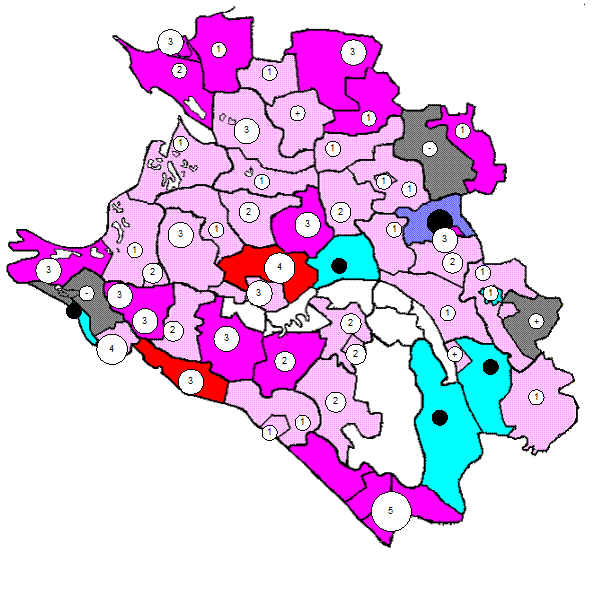Physically Dedicated
§ The use of multiple buses, each of which may connect only some certain modules (Expansion Bus, High-Speed Bus) § Advantage – high throughput (there is less bus connection) Disadvantage – increased size and cost of the system. 39. Which methods of arbitration are used now? Arbitration may be centralised or distributed Centralised · Single hardware device controlling bus access § Bus Controller § Arbiter · May be part of CPU or separate Distributed Arbitration · Each module may claim the bus · Control logic on all modules
40. Describe existed methods of access to different types of memory. Access to external devices · Sequential (The stored data and additional address information are divided into elements, called records) § Start at the current position and read through in order § Access time depends on location of data and previous location § e.g. tape · Direct § Individual blocks have unique address § Access is by jumping to vicinity(окрестность) plus sequential search § Access time depends on location and previous location § e.g. disk In both types (direct and sequential) of accesses a combined mechanism of Read/Write is used Access to internal devices · Random § Individual addresses identify locations exactly § Access time is independent of location or previous access § e.g. RAM · Associative § Data is located by a comparison with contents of a portion of the store § Access time is independent of location or previous access § e.g. cache 41. Which parameters are used for the estimation memory devices performance? · Access time § Time between presenting the address and getting the valid data (for random access). § Time, which is necessary for the transference of the Read/Write mechanism in the required position with respect to the carrier (for direct and sequential accesses). · Memory Cycle time (TC) § Time may be required for the memory to “recover” before next access § Cycle time is access + recovery · Transfer Rate (R [bit/sec]) § for direct and sequential accesses: R = N/(TN – TA), § for random access: R = 1/ TC (inverse proportional to TC) 42. What is RAM? Describe distinguishing characteristics of RAM. What’s the difference between DRAM… Memory unit is called RAM if any location can be accessed for Read or Write operation in some fixed amount of time that is independent of the location’s address RAM · Read/Write at an arbitrary address (at random) · Volatile · Temporary storage · Static or dynamic DRAM · Bits stored as a charge in capacitors · Charges leak · Need refreshing even when powered · Simpler construction · Smaller per bit · Less expensive · Need refresh circuits · Slower · Main memory
SRAM · Bits stored as on/off · No charges to leak · No refreshing needed when powered · More complex construction · Larger per bit · More expensive · Does not need refresh circuits · Faster · Cache 43. What is ROM?
|




